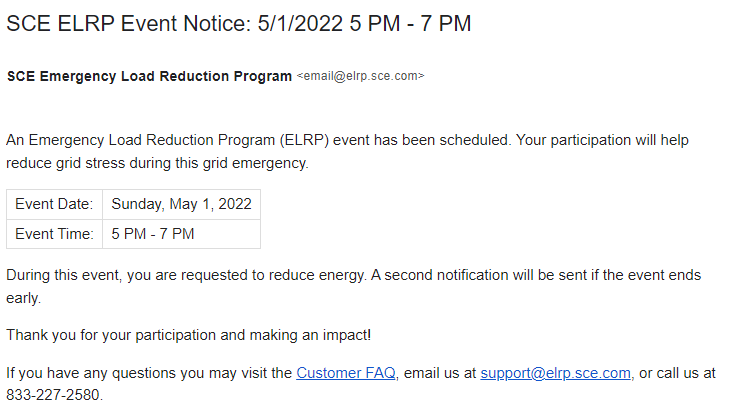Prohibited Resources (PR) can only be used during ELRP events when permitted by a Governor’s Executive Order. Non-residential ELRP customers located in a disadvantaged community (DAC), as designated by SB 535, cannot use PR under the current program rules, unless specifically overridden by a Governor’s Executive Order. Under emergency situations, regulations may be temporarily lifted by a Governor’s Order to meet grid reliability needs; this was the case during the September 2022 heatwave. SCE will follow applicable California Public Utilities Commission (CPUC) and/or Governor orders during these events.
Non-residential ELRP participants who are dually enrolled in another DR program may use prohibited resources during ELRP events, but only to achieve incremental load reduction (ILR) beyond any existing commitments when specifically permitted by a Governor’s Executive Order.
These resources are defined as prohibited, in either topping cycle Combined Heat and Power (CHP) or non-CHP configuration:
- Distributed generation technologies using diesel
- Natural gas
- Gasoline
- Propane
- Liquefied petroleum gas
Although prohibited resources may be used by eligible non-residential participants to respond to ELRP events (when permitted by a Governor’s Executive Order and in compliance with Rule 21 and other applicable regulations and permits), it is important to note that stationary back-up generators are often subject to air district requirements, which vary by air district and may include permitting requirements, emission limits, and operational restrictions. ELRP participants are solely responsible for all environmental and other regulatory requirements associated with operating their prohibited resources.
Disadvantaged communities are defined as (1) areas disproportionately affected by environmental pollution and other hazards that may lead to negative public health effects, exposure, or environmental degradation; and (2) areas with concentrations of people who are of low income, high unemployment, low levels of homeownership, high rent burden, sensitive populations, or low levels of educational attainment. CalEnviroScreen, an analytical tool created by the California Environmental Protection Agency (CalEPA), combines different types of census tract-specific information into a score to determine which communities are the most burdened or “disadvantaged.” The Disadvantaged Communities Map shows areas classified as such by CalEnviroScreen. Disadvantaged communities are defined as the top 25% scoring areas from CalEnviroScreen, along with other areas with high amounts of pollution and low populations.
Using prohibited resources during test events is not permitted and will not be compensated.

